This article was medically reviewed by Luba Lee, FNP-BC, MS. Luba Lee, FNP-BC is a Board-Certified Family Nurse Practitioner (FNP) and educator in Tennessee with over a decade of clinical experience. Luba has certifications in Pediatric Advanced Life Support (PALS), Emergency Medicine, Advanced Cardiac Life Support (ACLS), Team Building, and Critical Care Nursing. She received her Master of Science in Nursing (MSN) from the University of Tennessee in 2006.
There are 22 references cited in this article, which can be found at the bottom of the page.
This article has been viewed 11,931 times.
Walnuts are tree nuts, which are one of the most common allergens in the world.[1] You may develop a walnut allergy after using antibiotics or because of a leaky gut, but sometimes the cause is unknown. The best way to prevent allergic reactions is avoiding tree nuts altogether, but accidents can still happen. An allergic reaction can be relatively minor and only cause skin itching or hives, or they could be very severe and cause anaphylaxis. If you or someone else is having trouble breathing, feeling short of breath, or experiencing tightness in your chest or throat, then call emergency services right away. Severe reactions like this require emergency medical care immediately. This all sounds scary, but with quick action and proper care, you can protect yourself and the people you care about from severe reactions.
Steps
Responding to Serious Reactions
-
1Recognize the symptoms of anaphylaxis. Anaphylaxis is a severe, life-threatening reaction that requires immediate medical help. Symptoms include tightening of the throat and chest, trouble breathing, a rapid pulse, dizziness, and unconsciousness. If you experience these symptoms or notice them in someone else, then you need medical help right away.[2]
- Some people with anaphylaxis also experience a sense of overwhelming fear, which might be part of the body’s defense mechanism. If you or the person experiencing the attack suddenly panics, then the reaction could be getting worse.
- OTC antihistamines don’t stop anaphylaxis, so don’t try to treat the condition at home.
- Anaphylaxis is very scary, but you will be fine if you receive quick treatment. That's why acting fast is so important.
-
2Call emergency services right away if you experience anaphylaxis. This is a life-threatening condition that requires immediate help, so don’t delay in calling for emergency medical help. Dial the local emergency number, like 911, and tell the operator that someone is experiencing anaphylaxis. They’ll know that this is an emergency situation and will send help right away.[3]
- Calling emergency services is better than trying to drive someone to the hospital. Medical technicians will have the right equipment on hand to stop the reaction, so they can treat and stabilize the person on the way to the hospital.
- Never try to drive yourself if you’re experiencing anaphylaxis. You could lose consciousness on the way.
Advertisement -
3Administer an epinephrine shot if you have one. If you have a history of allergic reactions, then your doctor may have prescribed an epinephrine shot for you, often called an EpiPen. This medication stops the reaction. While you’re waiting for help to arrive, administer the shot. Remove the safety seal on the shot and press it firmly into your outer thigh. Hold the shot in place for at least 10 seconds to inject all of the medication. This will hurt a bit just like other shots, but it can save someone's life.[4]
- Don’t administer oral medication to someone experiencing anaphylaxis. They could choke on it.
- Even if you have an epinephrine shot, you still have to call 911 or the local emergency number. The reaction could start again when the medicine wears off.
- Some shots might have different instructions, so always follow the directions provided.
- Carrying an EpiPen can be inconvenient, but you should always have it on you if you have a severe allergy because it can save your life. Make it part of your normal routine to check for it when you leave the house, just like with your wallet and keys.
-
4Prevent shock until emergency help arrives. Even after you administer epinephrine, severe allergic reactions could cause shock. This could be dangerous but it's treatable. Lie back and raise your feet off the ground to keep blood flowing to your brain. Cover yourself with a blanket to stay warm. Remain in this position until help arrives.[5]
- If someone else is experiencing the allergy attack, help them get into this position.
- Don’t put a pillow or anything else under your head. This could close off your airway.
Handling Minor Reactions
-
1Rest and drink fluids if you're have gastrointestinal issues. You may experience nausea, vomiting, diarrhea, and abdominal pain during a walnut allergy reaction.[6] Sitting or lying in a comfortable position may help minimize your symptoms until the walnuts leave your system. In the meantime, drink clear liquids so you don't get dehydrated.[7]
- For instance, you might drink water, clear soda, or broth.
-
2Apply antihistamine cream to rashes and hives. Hives and rashes are usually very itchy. If the reaction is bothering you, try rubbing an antihistamine cream like Cortisone or Benadryl onto the rashes to relieve the itching and swelling.[8]
- If you don’t have antihistamine cream, you can also use an ice pack or cold compress on the hives. This can numb the itching.
- Remember that applying cream only treats the itching; it doesn’t stop the reaction. The reaction could still get worse after you apply cream or ice.
- Allergic reactions are stressful, but do your best to stay calm. Anxiety can make the reaction worse. Take a minute to take some deep breaths and process what’s happening. Then start treating the reaction.[9]
-
3Take oral antihistamines to treat hives, itchy eyes, congestion, and sneezing. For reactions that cause sneezing, a runny nose, or a widespread rash, you need a systemic treatment. Take an over-the-counter oral antihistamine medication like Benadryl to stop the reaction. This should help clear up your symptoms during a minor reaction.[10]
- Antihistamines are powerful medications, so don’t take more than directed. They often cause drowsiness, so plan on resting for a few hours after the reaction.
- If you don’t have any medication at home, see if someone can go to the store and get it for you. Driving during an allergy attack is dangerous.
-
4Avoid hot showers or baths if you have hives. Heat makes hives and rashes worse, so it’s best to avoid taking a shower or bath until the reaction clears up. Afterward, you can shower normally.[11]
- If you have to wash yourself, use cool water instead. You could also use a wet washcloth instead of taking a full bath or shower.
-
5Monitor your condition for severe reactions. Allergic reactions can suddenly get worse, so continue monitoring yourself or the person having the attack. If you see any signs of a serious reaction, get emergency medical help right away.[12]
- Signs of a severe reaction include abdominal pains or vomiting, wheezing, shortness of breath, coughing, chest tightness, dizziness, swelling in the mouth or throat, and heart palpitations.
Avoiding Reactions
-
1Check yourself for itching, red bumps, rashes or a runny nose. Allergic reactions to food like walnuts usually develop with 30 minutes of eating the food. However, they can take a few hours as well. Early signs are systemic itching, watery eyes, red rashes or hives, sneezing, and a runny nose.[13]
- If you’re with someone, you might notice the rashes or hives before they do. Let them know if hives suddenly start developing.
- You might not experience all of these symptoms; in fact, most people don’t experience all of them at once. Some people only get rashes or a runny nose, for instance.
-
2Follow up with an allergist to confirm your allergy. Unless you’ve been tested before, you can’t know for sure that walnuts caused your allergy. Visit an allergist for a skin test to confirm that you’re allergic to walnuts, and then take steps to avoid them in the future.[14]
- Allergy skin tests are simple and non-invasive. The allergist will simply place some liquid on your skin and see if you experience any irritation or itching.
- The test might show that you’re allergic to all tree nuts. This is one of the most common allergy types.
-
3Monitor everything your child eats if you're a parent. It's especially stressful to have children with severe food allergies, but you can make sure they don't experience attacks. with careful monitoring. Always check the ingredients of everything they eat and avoid anything prepared alongside walnuts. You should also inform their school about their allergy so the nurse can take the right steps if they have an attack.[15]
- If your child is going over to a friend's house, tell their parents that your child has a severe allergy. This way, they can make sure they keep all walnuts and nut products away from them.
- It would help to leave an EpiPen with people who your child visits frequently so they'll never be without it.
-
4Read the nutrition labels on everything you eat. Check the ingredients on everything to see if there are any walnuts or other tree nuts in the item. If so, then don’t buy the item. Get into this habit so you don’t accidentally expose yourself to the allergen.[16]
- Labels might say something like “This food was prepared in a facility that also processes tree nuts.” If you’re very sensitive to walnuts or tree nuts, then you should avoid these foods as well.
-
5Tell servers at restaurants that you’re allergic to walnuts. Nuts are common toppings and ingredients in many dishes, and there is also a lot of cross-contamination in kitchens. Tell your server about your allergy as soon as you sit down so they can make sure your food doesn’t come in contact with any walnuts.[17]
- Even if you tell a server at a restaurant that you’re allergic to something, check the dish before you eat it. Mistakes could happen in the kitchen.
- This is important in ice cream shops as well. The server could use the same spoon on ice cream with nuts in it when they serve you, which could trigger a reaction.
- You might feel embarrassed to talk about your allergy with servers, but remember that they see things like this all the time. It's part of their job to make sure all the patrons are safe.
-
6Wear a medical bracelet indicating your allergy. Medical bracelets are common for people with chronic health conditions to inform medical technicians of their medical information. If you experience a reaction and can’t tell technicians what’s happening, the bracelet will show them that you’re probably having an allergy attack. They can then administer the proper care.[18]
- Wear the bracelet in a visible place, like right on your wrist or around your neck.
Healing Your Gut from Food Allergies
-
1Do an elimination diet to identify your food triggers. During an elimination diet, you'll eliminate potential trigger foods from your diet to see which might be causing your symptoms.[19] Stop eating common trigger foods like nuts, dairy, gluten, soy, shellfish, corn, citrus, and eggs for 2-4 weeks. Then, slowly re-introduce these foods 1 at a time to see if they cause a reaction in your body.[20]
- Wait until your symptoms go away before you start re-introducing foods. Additionally, only re-introduce 1 food at a time so you can be sure what triggers you.
-
2Eliminate your trigger foods from your diet permanently. After your elimination diet, you may find that certain foods make you feel bad. You may have an intolerance or allergy to these foods, so cut them out of your diet. Additionally, cut out processed foods, which are common triggers. In time, this may help your gut heal.[21]
- You know you're allergic to walnuts, but you may find that you're also sensitive to another food, such as gluten or soy. If you stop eating these trigger foods, it might help the lining of your gut heal.
- Your GI tract contains 70-80% of your immune system, so it's important to keep it healthy.[22]
-
3Eat healing foods to help repair your gut. While your trigger foods may harm your gut, some healthy foods help promote digestive health. Add more of these foods into your daily diet to help your gut heal. Here's a list of foods that are generally healing:[23]
- Leafy greens
- Whole grains
- Lean protein
- Fresh fruits and veggies
- Bone broth
-
4Take supplements that support a healthy gut. While supplements aren't a cure-all, they may help your gut heal. Common supplements for gut health include probiotics, vitamin D, vitamin C, zinc, and L-glutamine. Buy your supplements at a health food store, drug store, or online. Use your supplements daily as directed on the label to see if they help you.[24]
- Always check with your doctor before taking supplements to make sure they're right for you. Some supplements may interfere with other medications and might worsen some medical conditions.
-
5Soak in an Epsom salt bath. Epsom salt contains magnesium, which may help heal your gut. An Epsom salt bath may help relieve inflammation in your body and might improve your digestive health. Fill your tub with comfortably hot water, then pour your Epsom salt into the water. Soak in your bath for 15 to 20 minutes.[25]
- You can use plain Epsom salt, but you might also try salt blends.
-
6Get an infrared sauna treatment to help remove toxins. Sweating removes toxins from your body. Since an infrared sauna heats you up, it may help you sweat more so the toxins leave your body faster. There's no guarantee that infrared sauna treatments will help you, but you might try them to see how you feel afterward. Visit a local wellness or sauna clinic to try the infrared sauna.[26]
- Infrared saunas use a light to heat up your body rather than hot steam as in a traditional sauna.[27]
Expert Q&A
-
QuestionHow do you deal with a peanut allergy?
 Katie Marks-Cogan, MDDr. Katie Marks-Cogan is a board certified Pediatric & Adult Allergist at Clear Allergy based in Los Angeles, California. She is the Chief Allergist for Ready, Set, Food!, an infant dietary supplement designed to reduce the risk of childhood food allergies. She received her M.D. with honors from the University of Maryland. She then completed her residency in Internal Medicine at Northwestern University and fellowship in Allergy/Immunology at the University of Pennsylvania and CHOP.
Katie Marks-Cogan, MDDr. Katie Marks-Cogan is a board certified Pediatric & Adult Allergist at Clear Allergy based in Los Angeles, California. She is the Chief Allergist for Ready, Set, Food!, an infant dietary supplement designed to reduce the risk of childhood food allergies. She received her M.D. with honors from the University of Maryland. She then completed her residency in Internal Medicine at Northwestern University and fellowship in Allergy/Immunology at the University of Pennsylvania and CHOP.
Board Certified Pediatric & Adult Allergist Try sunflower butter instead of peanut butter for peanut allergies. If the person isn't allergic to tree nuts, but only peanuts, you can also use almond butter in your recipes.
Try sunflower butter instead of peanut butter for peanut allergies. If the person isn't allergic to tree nuts, but only peanuts, you can also use almond butter in your recipes.
Warnings
- Tree nut allergies tend to be more severe than other allergies, so see an allergist right away if you’ve ever had a reaction.[28]⧼thumbs_response⧽
- Always inspect your food before eating it if someone else prepared it. People can make mistakes or be unaware of your allergy.⧼thumbs_response⧽
- Anaphylaxis is a life-threatening reaction, so never try to treat it at home by yourself. Get emergency medical help immediately, even if you have an EpiPen.⧼thumbs_response⧽
References
- ↑ https://www.foodallergy.org/living-food-allergies/food-allergy-essentials/common-allergens/tree-nut
- ↑ https://www.aaaai.org/conditions-treatments/allergies/anaphylaxis
- ↑ https://health.clevelandclinic.org/what-to-do-when-you-have-an-allergic-reaction/
- ↑ https://medlineplus.gov/ency/article/000005.htm
- ↑ https://medlineplus.gov/ency/article/000005.htm
- ↑ https://acaai.org/allergies/types/food-allergies/types-food-allergy/tree-nut-allergy
- ↑ https://my.clevelandclinic.org/health/symptoms/8106-nausea--vomiting/care-and-treatment
- ↑ https://medlineplus.gov/ency/article/000005.htm
- ↑ https://medlineplus.gov/ency/article/000005.htm
- ↑ https://medlineplus.gov/ency/patientinstructions/000549.htm
- ↑ https://health.clevelandclinic.org/what-to-do-when-you-have-an-allergic-reaction/
- ↑ https://www.nhs.uk/conditions/allergies/symptoms/
- ↑ https://health.clevelandclinic.org/what-to-do-when-you-have-an-allergic-reaction/
- ↑ https://www.aaaai.org/tools-for-the-public/conditions-library/allergies/everything-you-need-to-know-about-tree-nut-allergy
- ↑ https://acaai.org/allergies/who-has-allergies/children-allergies
- ↑ https://myhealth.alberta.ca/Health/aftercareinformation/pages/conditions.aspx?hwid=abk1352
- ↑ https://kidshealth.org/en/teens/nut-allergy.html
- ↑ https://kidshealth.org/en/teens/nut-allergy.html
- ↑ https://www.mayoclinic.org/diseases-conditions/food-allergy/diagnosis-treatment/drc-20355101
- ↑ https://www.fammed.wisc.edu/files/webfm-uploads/documents/outreach/im/handout_elimination_diet_patient.pdf
- ↑ https://www.fammed.wisc.edu/files/webfm-uploads/documents/outreach/im/handout_elimination_diet_patient.pdf
- ↑ https://pubmed.ncbi.nlm.nih.gov/10564096/
- ↑ https://www.hopkinsmedicine.org/health/wellness-and-prevention/5-foods-to-improve-your-digestion
- ↑ https://www.health.harvard.edu/vitamins-and-supplements/health-benefits-of-taking-probiotics
- ↑ https://health.clevelandclinic.org/7-things-you-probably-didnt-know-about-epsom-salt/
- ↑ https://www.ncbi.nlm.nih.gov/pmc/articles/PMC3312275/
- ↑ https://health.clevelandclinic.org/infrared-sauna-benefits/
- ↑ http://research.bmh.manchester.ac.uk/informall/allergenic-food/index.aspx?FoodId=53
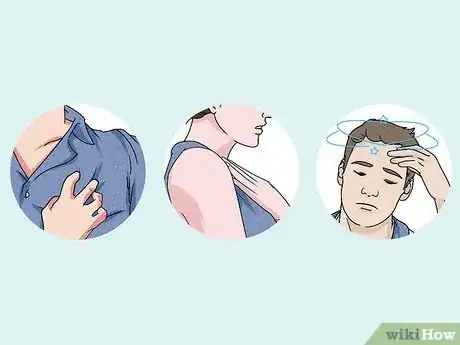
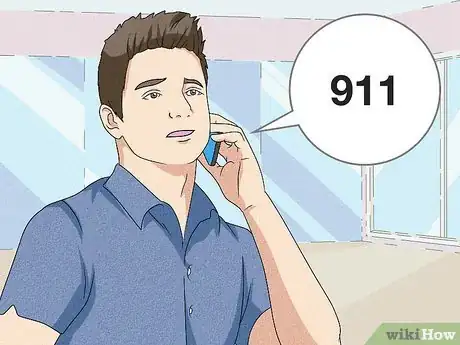
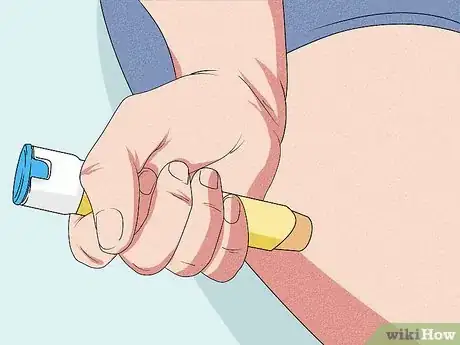
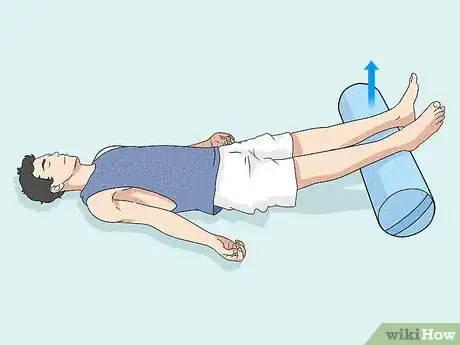
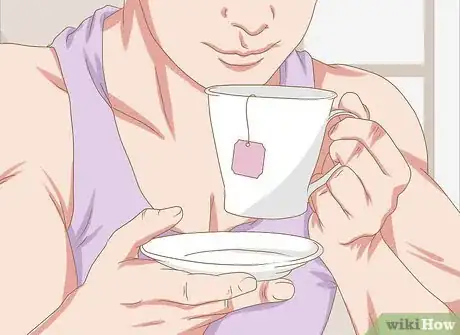
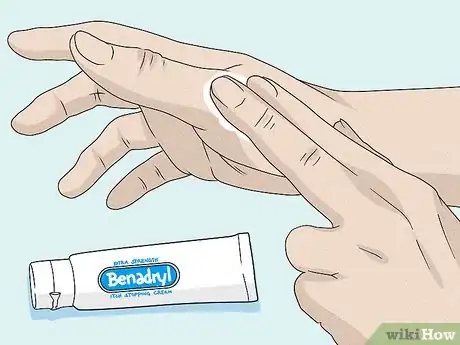
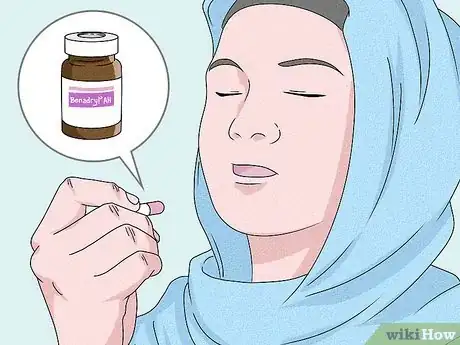
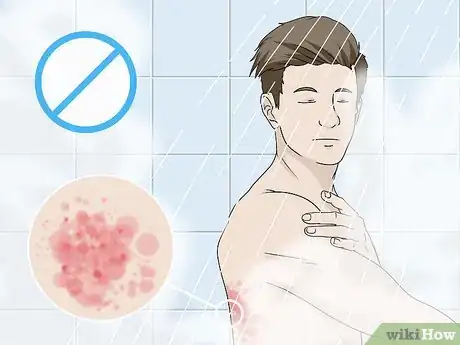
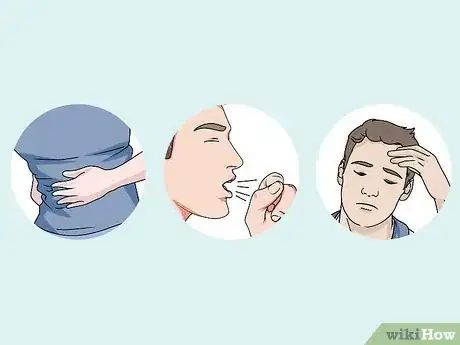
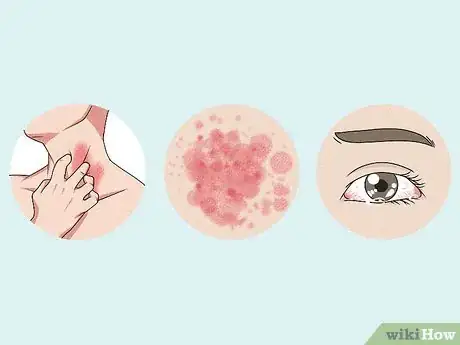


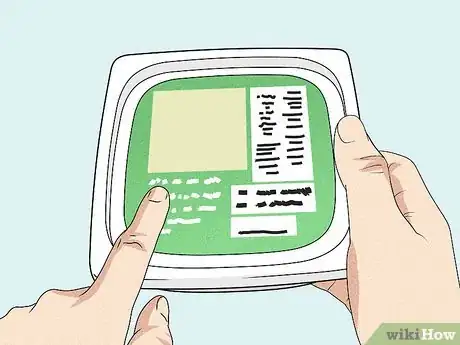
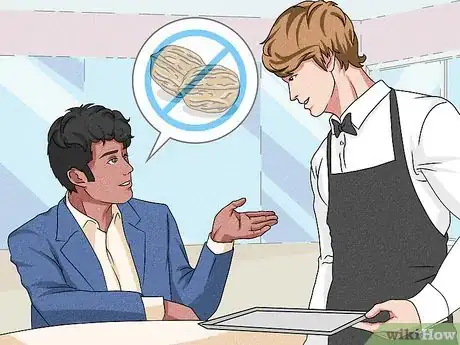
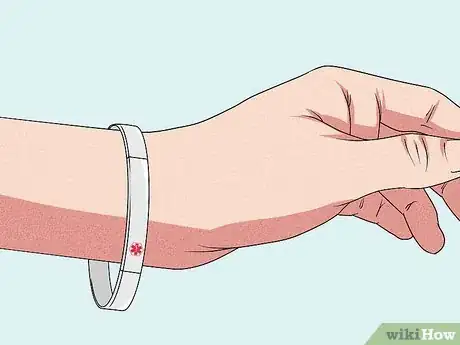
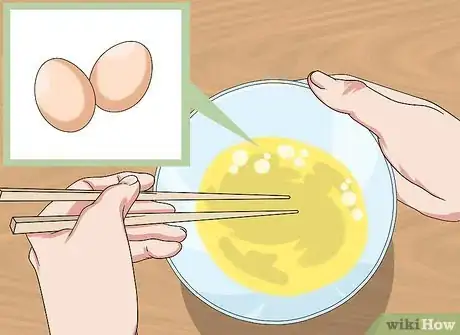
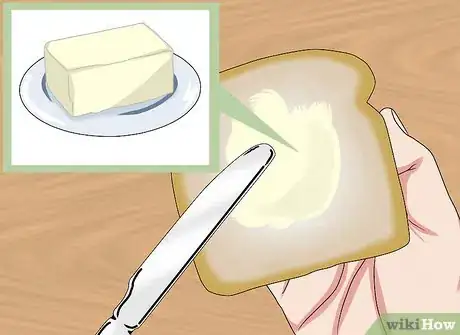
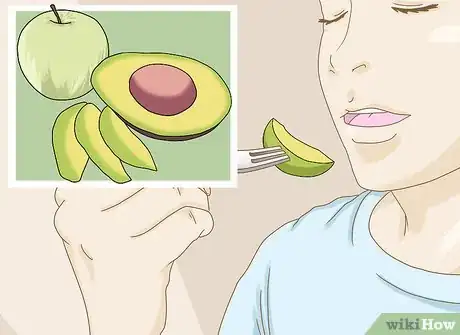


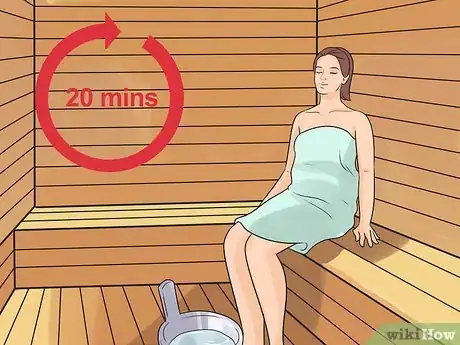







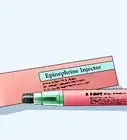



































Medical Disclaimer
The content of this article is not intended to be a substitute for professional medical advice, examination, diagnosis, or treatment. You should always contact your doctor or other qualified healthcare professional before starting, changing, or stopping any kind of health treatment.
Read More...